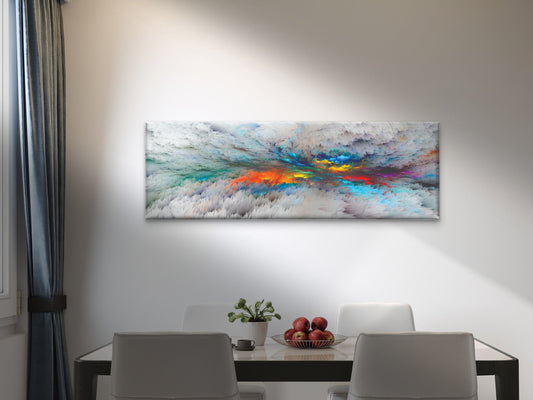Street wall art, also known as urban art or graffiti, has long been a powerful medium for artists to express themselves in public spaces. Once considered a rebellious act, street art has evolved into a celebrated form of artistic expression that blends creativity with culture, social commentary, and community engagement. From colorful murals in bustling cities to thought-provoking graffiti on alleyway walls, street wall art transforms the ordinary into something extraordinary. In this blog, we’ll explore the essence of street wall art, its history, and its significance in modern culture.
The Origins of Street Wall Art
Street art’s origins can be traced back to ancient times, with early examples found in cave paintings and murals from ancient civilizations like Egypt and Rome. However, the modern street art movement began to take shape in the 1960s and 1970s, particularly in New York City. Graffiti artists started using spray paint to tag walls, trains, and buildings, making their marks in ways that were often considered illegal.
These early street artists were often influenced by hip-hop culture, social unrest, and the desire to reclaim public spaces for artistic expression. What started as a subversive act of defiance evolved into a respected art form that has since spread globally, from the walls of London to the streets of São Paulo and beyond.
Street Wall Art Today: More Than Just Graffiti
Street wall art is no longer limited to graffiti tags or hastily scrawled messages. Today, it encompasses a wide range of styles, from large-scale murals to intricate stencils, mosaics, and 3D installations. Street art is now recognized as an integral part of urban landscapes, helping to revitalize neighborhoods, bring attention to social issues, and foster a sense of community.
1. Murals: Large murals often depict powerful imagery or tell stories that reflect local culture, history, or pressing social matters. These public artworks not only beautify urban areas but also serve as a platform for artists to make statements on political, environmental, and cultural topics.
2. Graffiti: While graffiti remains a controversial form of street art, it continues to be a dynamic way for artists to express their identity, whether through tagging, detailed lettering, or abstract designs.
3. Stencils and Paste-Ups: Popularized by artists like Banksy, stencils allow street artists to quickly replicate their designs on walls with precision. Paste-ups, or wheat-pasting, involve applying pre-printed images or posters onto walls, adding a pop of illustration to the streets.
4. 3D Street Art: Some artists take street wall art to another level by creating optical illusions, sculptures, or installations that interact with the environment in unique ways. These three-dimensional pieces offer a more immersive experience, often drawing people in for a closer look or inviting them to participate.
The Role of Street Art in Culture and Social Commentary
Street art is more than just decorative—it’s a vehicle for cultural expression and activism. Artists often use their work to comment on societal issues such as inequality, political corruption, environmental degradation, and human rights. Because street art is public and accessible, it can reach a wide audience and provoke thought, discussion, and sometimes even change.
For example, in cities like Berlin and Buenos Aires, street murals have become a form of protest, speaking out against political regimes and economic crises. In other parts of the world, like Rio de Janeiro’s favelas, street art has been used as a tool for reclaiming neglected spaces, transforming them into vibrant areas that reflect the voices of marginalized communities.
The Impact on Urban Revitalization
Street art has the power to breathe new life into decaying or forgotten areas of cities. Urban murals and art projects have been instrumental in gentrification efforts and community-driven initiatives aimed at revitalizing neighborhoods. Cities like Detroit, Miami (Wynwood Walls), and London have turned once-overlooked districts into tourist destinations, attracting both locals and visitors eager to see the colorful, imaginative works that decorate the streets.
The visual transformation of a neighborhood often goes hand-in-hand with economic revival, as street art can draw attention to local businesses, increase foot traffic, and even raise property values. However, it’s important to acknowledge that gentrification can be a double-edged sword—while it brings growth, it can also displace long-term residents.
The Fine Line Between Art and Vandalism
The question of whether street art is considered art or vandalism remains a hot topic. The legality of street art depends largely on permission from property owners, the location, and local laws. In many places, street artists risk legal consequences for creating unauthorized works, which makes the movement both bold and controversial.
That said, an increasing number of cities are commissioning street artists to create legal murals and installations as part of beautification projects. These collaborations between artists and municipal governments or businesses are helping to legitimize street art and bring it into mainstream appreciation.
Street Art as a Global Phenomenon
What was once seen as a rebellious subculture has become a global phenomenon, with street art festivals, galleries, and exhibitions being held around the world. Artists like Shepard Fairy, Banksy, and JR have achieved international acclaim, proving that street art can transcend its underground roots and capture the imagination of people across borders.
In cities like Barcelona, São Paulo, and Melbourne, street art is embraced as part of the cultural fabric, with entire districts dedicated to public murals and graffiti. These global art hubs attract street artists from around the world, creating a melting pot of styles and influences that reflect the diversity of the modern street art movement.
Conclusion: The Lasting Influence of Street Wall Art
Street wall art has come a long way from its origins as an act of defiance to its current status as a respected and celebrated art form. Whether it’s a colorful mural on a city street or a simple stencil tucked away in an alley, street art continues to shape the urban landscape and spark conversations. By turning the city itself into a canvas, street artists remind us of the power of art to reflect society, inspire change, and bring communities together.
Street wall art may be temporary, but its impact is lasting—challenging the way we view public spaces, art, and the messages that resonate within them.









